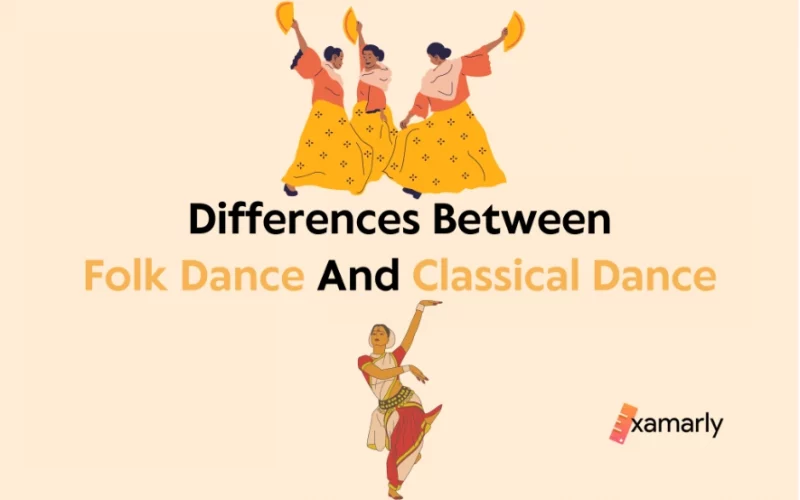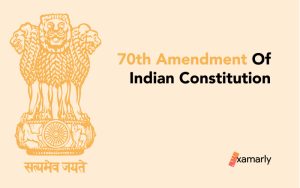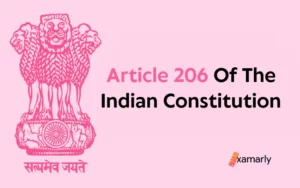Are you curious about the differences between folk and classical dance? Look no further as we delve into the unique characteristics that define these two art forms. Folk and classical forms may seem similar at first glance, but a closer examination reveals key differences in style, technique, and cultural roots.
From the energetic moves of folk to the grace and precision of classical, these two art forms offer unique experiences for audiences and performers alike. But what exactly sets these two styles apart?
Let’s dive deep into the basic aspects of the differences between folk dance and classical dance.
Differences Between Folk Dance And Classical Dance: What Is Folk Dance?
Folk dance is performed by communities and reflects the cultural and social values of the people who created it. These are often passed down through generations, preserving the traditions and customs of the community.
They are typically performed at social gatherings such as weddings, festivals, and other celebrations, and often accompany traditional music played on instruments such as fiddles, accordions, and guitars. These can take many forms, including circle dances, line dances, and couple dances, and can range from simple, repetitive movements to more complex and energetic routines.
Folk dancing has specific steps, rhythms, and movements that are unique to the culture and region from which they originated. Some popular folk dances include the hula in Hawaii, flamenco in Spain, square dancing in the United States, ceilidh in Scotland, and the tango in Argentina.
In addition to being a form of entertainment, folk dancing is also a valuable tool for preserving cultural heritage. By performing them, people are able to connect with their roots, learn about their cultural history, and pass these traditions down to future generations.
Nature
Folk dance is rooted in the traditions and cultures of a specific community. It’s nature is characterised by its informal and participatory style, its emphasis on community and social interaction, and its connection to the cultural heritage of a region or country.
One of the key features of them is their communal nature. These are often performed in groups, encouraging social interaction and community spirit. The movements and rhythms in folk dancing often reflect the values and traditions of the community, and can be seen as a celebration of cultural heritage.
In addition, it is often a form of storytelling, using movement and gesture to convey a narrative or express cultural beliefs and values. The dancing can also be used as a way of preserving cultural traditions and passing them down to future generations.
Complexity
The complexity of folk dancing can vary greatly, depending on the specific style and cultural origin of the dance. Some are simple and repetitive, featuring basic steps and movements that are easy to follow. These are often performed by people of all ages and abilities, and are designed to encourage social interaction and community participation.
On the other hand, some can be more complex and energetic, featuring intricate movements and rhythms. These may require a higher level of skill and physical ability, and are often performed by more experienced dancers.
The complexity is also influenced by its cultural and historical background. For example, some may be based on religious or spiritual traditions and may include symbolic movements that have deep cultural significance.
Others may be more celebratory in nature, incorporating lively, energetic movements that reflect the joy and excitement of the occasion. These are more focused on the emotional aspects of society.
In general, the complexity can vary widely, ranging from simple and accessible to complex and challenging. However, regardless of their complexity, all folk dances are valued for their connection to cultural heritage and their role in fostering community and social interaction.
Dancers
Folk dance is typically performed by people from the community in which it originated. These dancers may include individuals of all ages, genders, and abilities, and can range from amateur performers to professional dancers.
This inclusive nature means that it is often performed by families, including children and grandparents, as well as by friends and members of social organizations.
Performance
Folk dances are typically performed in community settings, such as festivals, fairs, and cultural events, and are often performed by people from the community in which the dance originated. These are usually performed in groups, with participants forming lines or circles and performing the steps and movements together.
The performance often includes live music, with instruments such as drums, flutes, and stringed instruments being played to accompany it. The music is typically upbeat and energetic, reflecting the joy and celebration.
These are performed with a strong sense of community and cultural pride, and are often seen as a way of preserving cultural heritage and traditions. The dancers typically wear traditional costumes that reflect the cultural origins and add to the visual spectacle of the performance.
In terms of style, these can vary greatly, with different cultures having their own unique styles, movements, and rhythms. Some are energetic and athletic, while others are more graceful and fluid. Some may be performed in silence, while others may feature singing and shouting as part of the performance.
Beginnings
The origin of folk dances is often closely tied to the history and cultural traditions of a particular region or community. It has origins in many different cultures and nations and has been around since ancient times.
In the West, it began in Europe during the Middle Ages and Renaissance, when it was used as a form of entertainment, as well as part of religious ceremonies. In the East, it was part of everyday life, often performed during harvest festivals or other community gatherings.
Many African folk dances have their roots in the spiritual traditions of African tribes, and were performed as part of religious rituals. Similarly, many Asian folk dances have their roots in the ancient court dances of royalty and the aristocracy, and were performed for entertainment and to celebrate special events.
In Europe, they have been influenced by the cultural traditions of different countries and regions, including England, Scotland, Ireland, and Spain. European folk dancing often reflect the history and traditions of the people who created them, and may be performed at events such as fairs, festivals, and cultural celebrations.
Today, these are still a popular activity all over the world, with different regions having their own unique styles of dance. Some popular ones include the Irish jig, the Greek syrtaki, and the Indian bhangra.
Dance Forms In India
Folk dances are simple dance forms. Some of the most well-known Indian forms include:
- Bhangra – a high-energy dance from the state of Punjab, performed to the beat of dhol (a drum).
- Garba – a traditional Indian dance from the state of Gujarat, performed in a circular pattern around a central lamp or image.
- Dandiya – performed during the Navratri festival in Gujarat, using colorful sticks to create intricate patterns.
- Lavani – a popular form from Maharashtra, characterized by its fast-paced rhythm, provocative lyrics, and sensual moves.
- Chhau – a masked dance originating from the eastern states of Jharkhand, West Bengal, and Odisha, characterized by its acrobatic movements and use of props.
- Bihu – a tradition from the state of Assam, performed during the Bihu festival to celebrate the arrival of spring.
You Might Also Like To Read: States And Capitals Of India: Exploring India’s Regional Diversity.
Differences Between Folk Dance And Classical Dance: What Is Classical Dance?
Classical dance is a highly stylized form of dance that has its roots in ancient cultures and civilizations, including India, China, and Greece. These are characterised by their intricate and precise movements, as well as their emphasis on storytelling and expression.
It’s forms are typically performed in a highly stylized manner, with the dancers performing precise movements and gestures that have been passed down through generations. These movements are designed to convey a story, an emotion, or to express a particular feeling, and are often performed to live music or recorded classical music.
These are characterised by their intricate and precise movements, as well as their emphasis on storytelling and expression. Some of the most well-known forms include Bharatanatyam and Kathak in India, Beijing Opera in China, and ballet in Europe.
In India, classical is all about the guru-shishya tradition as the technique gets passed on.
Nature
The nature of classical dance is highly stylized and formal, with each form having its own unique set of movements and gestures that have been passed down through generations. These movements and gestures are designed to convey a story, an emotion, or to express a particular feeling, and are often performed to live music or recorded classical music.
It is also characterised by its emphasis on technique, with dancers spending years honing their skills and mastering the precise movements and gestures required to perform a particular form. This emphasis on technique allows classical dancers to convey their stories and emotions with a high degree of grace, elegance, and beauty.
In addition, these are often performed on stage, with the dancers wearing elaborate costumes and performing in front of large audiences. This formality and grandeur, combined with the precise and intricate movements, creates a highly theatrical and aesthetically pleasing performance.
Complexity
Classical dance is considered a complex form due to its technical aspects like the highly stylized movements, intricate footwork, and precise gestures. It requires a high degree of physical control and technical skill, and dancers spend years mastering the techniques required to perform a particular form.
One of the key aspects of it, that contributes to its complexity, is the use of hand gestures and facial expressions to convey emotions and tell a story. These gestures and expressions are highly stylized and must be performed with precision and accuracy, adding an additional layer of complexity to the form.
In addition, these often involves intricate footwork and body movements, with dancers performing jumps, turns, and lifts that require great physical control and strength. This level of physical difficulty contributes to the overall complexity of the form, and requires extensive training and practice to master.
The use of live music or recorded classical music also adds to it’s complexity. Dancers must be able to perform their movements in time with the music, and must also have a good understanding of the music and its structure to be able to accurately convey their story or emotion.
Dancers
Classical dancers are highly trained and skilled performers who have dedicated their lives to mastering the precise and intricate movements and gestures of their chosen form. They have a deep understanding of the storytelling, expression, and technique that are integral to it, and are able to convey these elements with grace, elegance, and beauty in their performances.
They typically begin their training at a young age, and often spend years studying and practicing their craft. They are trained in a wide range of styles, including classical ballet, Indian classical, and other traditional forms, and must be able to perform with precision and accuracy in order to be successful.
In addition to their technical skill, they must also have a strong artistic sense, and must be able to interpret and express the emotions and stories inherent in their form. This requires a deep understanding of the form, as well as the ability to convey emotion through movement and gesture.
They also need to be physically fit, as their performances require great strength, control, and endurance. They undergo rigorous training to maintain their physical fitness and to improve their technical skills, and must be able to perform for extended periods of time without losing focus or control.
Following are the names of 10 renowned classical dancers in India:-
- Birju Maharaj (Kathak).
- Sonal Mansingh (Bharatnatyam & Odissi).
- Kelucharan Mohapatra (Odissi).
- Pandit Chitresh Das (Kathak).
- Leela Samson (Bharatanatyam).
- Alarmel Valli (Bharatanatyam).
- Swapnasundari (Kuchipudi).
- Kalamandalam Krishnan Nair (Kathakali).
- Padma Subrahmanyam (Bharatanatyam).
- Raja and Radha Reddy (Kuchipudi).
Performance
Classical performances are elaborate, stylized and highly structured forms. They are characterised by intricate hand gestures, intricate footwork, and fluid body movements, as well as expressive facial expressions and dramatic poses. The performance is often accompanied by classical music, and it is usually performed solo or in a small ensemble.
In Indian classicals such as Bharatanatyam, Kuchipudi, and Odissi, the performance is usually divided into several sections including an invocation, pure dance, and a finale. The performance is traditionally held on a stage with the dancer dressed in elaborate, traditional costumes and wearing heavy jewelry. The dancer’s movements are accompanied by classical Indian musical instruments such as the mridangam, tabla, and sitar.
In other classical forms such as ballet, the performance may be more Western in style, with a focus on fluid movements and high leaps, as well as a more theatrical approach. The dancers typically wear tutus and ballet slippers, and the performance is often set to classical Western music.
Regardless of the form, classical performances are usually highly rehearsed and polished, requiring years of training and practice to perfect. The performance is meant to evoke a range of emotions, from joy and excitement to sadness and introspection.
Beginnings
Classical dance has its roots in the ancient traditions of various cultures around the world. In India, classical forms like Bharatanatyam, Kuchipudi, and Odissi have a rich history that can be traced back to the Hindu temples and courts of southern India. The forms were developed over many centuries and were influenced by various cultural, religious, and historical events.
In China, these are known as Beijing Opera, which is a highly stylized form that combines music, singing, acting, and acrobatics. Beijing Opera is often performed on large stages, and is known for its elaborate costumes and grand productions.
Ballet, a popular Western classical form, originated in the courts of Renaissance Italy and was later developed in France during the 17th century. Ballet was initially performed for the royal courts and was a combination of dance, music, poetry, and theater. Over time, it evolved into a more formalized style that was performed in theaters and ballet schools.
In many cultures, classicals were a means of telling stories, expressing religious beliefs, and entertaining audiences. The forms have been passed down from generation to generation, and they continue to be performed and appreciated around the world today.
These have a strong cultural and historical significance and is considered to be an important aspect of a country’s cultural heritage. Many classical forms have been included on UNESCO’s list of Intangible Cultural Heritage, recognizing their importance in preserving cultural traditions and promoting intercultural understanding.
Dance Forms In India
Classical dance is a traditional dance form. Some of the most popular Indian classical dance forms include:
- Bharatanatyam – a form from the state of Tamil Nadu, known for its intricate hand gestures, facial expressions, and fluid movements.
- Kathak – a form originating from North India, characterized by its fast-paced spins, intricate footwork, and storytelling through gestures.
- Kuchipudi – a form from Andhra Pradesh, known for its fluid movements, expressive eye and hand gestures, and performances based on Hindu mythology.
- Manipuri – a form from the state of Manipur, characterized by its delicate movements, fluid poses, and graceful hand gestures.
- Mohiniyattam – a form from Kerala, known for its fluid, flowing movements and performance of solo pieces.
- Odissi – a form from the state of Odisha, characterized by its sensuous movements, intricate hand gestures, and performance based on Hindu mythology.
You Might Also Like To Read About: States and Union Territories Of India.
Differences Between Folk Dance And Classical Dance
| Criteria | Folk Dance | Classical Dance |
|---|---|---|
| Origin | Originates from rural or folk communities, often associated with celebrations or religious rituals. | Originates from royal courts and developed over centuries as a form of high art. |
| Style | Simple and rhythmic, with movements that reflect the daily activities of the people. | Complex and elegant, with precise movements and poses. |
| Costume | Simple and comfortable, often traditional attire reflecting the local culture. | Elaborate and ornate, designed to accentuate the dancer’s movements and performance. |
| Music | Live or recorded traditional music, often with instruments such as drums and flutes. | Live or recorded orchestral music, often performed by a symphony or classical music ensemble. |
| Setting | Can be performed in outdoor or indoor settings, often with a participatory audience. | Typically performed in theaters or concert halls, with a passive audience. |
| Steps | Simple and repetitive, with emphasis on rhythm and energy. | Complex and varied, with emphasis on technical skills and expression. |
| Choreography | Often performed in groups, with synchronized movements and improvisation. | Typically performed by a single dancer or a small ensemble, with a pre-determined choreography. |
| Expression | Reflects the emotions, stories, and cultural values of the local community. | Expresses universal emotions and ideas, often with a focus on beauty and grace. |
| Performance | Typically performed for community events, festivals, and celebrations. | Typically performed for professional or artistic purposes, such as concerts, recitals, and stage productions. |
| Training | Less formal training required, with an emphasis on learning through participation and observation. | Extensive and formal training required, often through specialized schools or institutions. |
| History | Has a long and diverse history, reflecting the cultural heritage of various communities. | Has a rich and classical history, reflecting the artistic achievements of various civilizations. |
| Technique | Simple and straightforward, with an emphasis on rhythm and energy. | Complex and sophisticated, with an emphasis on technical skills and expression. |
| Flexibility | Less emphasis on physical flexibility, with an emphasis on rhythm and energy. | High emphasis on physical flexibility, with an emphasis on precise movements and poses. |
| Skill Level | Accessible to people of all skill levels, with a focus on participation and enjoyment. | Demands a high level of skill and training, with a focus on technical proficiency and performance. |
| Popularity | Widely popular and accessible, reflecting the cultural diversity of various communities. | Highly regarded and prestigious, reflecting the artistic achievements of various civilizations. |
| Pace | Fast and energetic, reflecting the upbeat and celebratory mood of the events. | Slow and graceful, reflecting the refined and elegant atmosphere of the performance. |
| Audience | Participants and spectators can often join in the dance. | Typically a passive audience, observing the performance from their seats. |
| Movement | Reflects the daily activities and cultural traditions of the people. | Refined and elegant, with precise movements and poses. |
| Emphasis | Emphasis on rhythm, energy, and participation. | Emphasis on technical proficiency, expression, and performance. |
| Form | Simple and straightforward, reflecting the rural or folk origins of the dance. | Complex and sophisticated, reflecting the classical origins of the dance. |
| Context | Reflects the cultural and social context of the local community. | Reflects the artistic and historical context of various civilizations. |
| Innovation | Often evolves over time, reflecting the changing cultural values and traditions of the people. | Typically preserves the classical tradition, with limited innovation or experimentation. |
| Social Function | Serves a social function, reflecting the communal and celebratory nature of the events. | Serves an artistic function, reflecting the cultural and historical achievements of various civilizations. |
Conclusion
In summary:
- Folk dance is traditional, informal and reflects a community’s culture.
- Classical dance is formal, codified, and trained with classical techniques.
More in the Differences series:
| Difference Between Hindustani And Carnatic Music | Difference Between Marxism and Leninism |
| Difference Between Cabinet And Council Of Ministers | Difference Between Indian Secularism and Western Secularism |
FAQs For Differences Between Folk Dance And Classical Dance
Where does folk dance originate from?
Folk dance originates from rural or folk communities and is often associated with celebrations or religious rituals.
What is the origin of classical dance?
Classical dance originates from royal courts and was developed over centuries as a form of high art.
What is the style & technique in folk dance?
Folk dance is simple and rhythmic, with movements that reflect the daily activities of the people. The technique in folk dance is simple and straightforward, with an emphasis on rhythm and energy.
What is the style & technique in classical dance?
Classical dance is complex and elegant, with precise movements and poses. The technique in classical dance is complex and sophisticated, with an emphasis on posture, alignment, control, and fluidity of movement.






